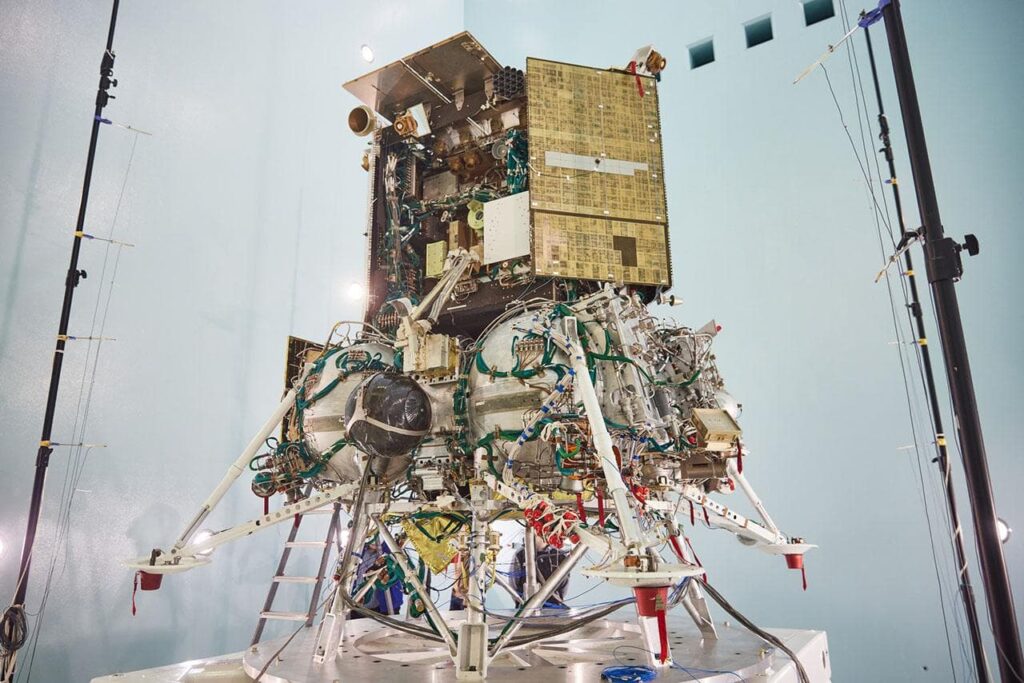The launch of the Russian Luna-25 mission will take place no earlier than 2023. This was acknowledged by the Director General of Roscosmos, Yuri Borisov.

The development of the concept of the Russian lunar mission began back in zero. Initially, it was a very ambitious project, involving the creation of a network of seismic stations on the Moon. However, due to the lack of necessary funding and the degradation of the Russian space industry, it has undergone many metamorphoses, significantly losing in scale. In 2013, the project was revived under the name “Luna-25”. It was announced that the automatic scout will go into space in 2016.
However, Luna-25 was not launched in 2016, 2018, or 2020. Constant postponements led to the fact that all foreign partners gradually withdrew from the project — first India, which initially planned to provide its rocket for the mission, and then Sweden. The LINA-XSAN device built by Swedish scientists was removed from Luna-25 and eventually installed on the Chinese Chang’e-4 device. And after the start of a large-scale Russian invasion of Ukraine, ESA also refused any cooperation with Russia. After that, the Pilot-D navigation camera built by European engineers was removed from Luna-25.
After the ESA left the project, Roscosmos said that the mission launch would still take place in 2022. However, the more time passed, the more obvious it became that Luna-25 would not fly anywhere. As a result, this was recognized by the General Director of Roscosmos, Yuri Borisov. He motivated the next transfer by the unavailability of the DISD-LR device responsible for a soft landing.
At the same time, Borisov said that Luna-25 will be ready for launch in 2023. However, taking into account the sanctions, the breakdown of relations with foreign partners and the very deplorable state of affairs in Russian cosmonautics at the moment, it seems very doubtful that Roscosmos will be able to send at least something to the Moon.
According to https://nplus1.ru
Follow us on Twitter to get the most interesting space news in time
https://twitter.com/ust_magazine
